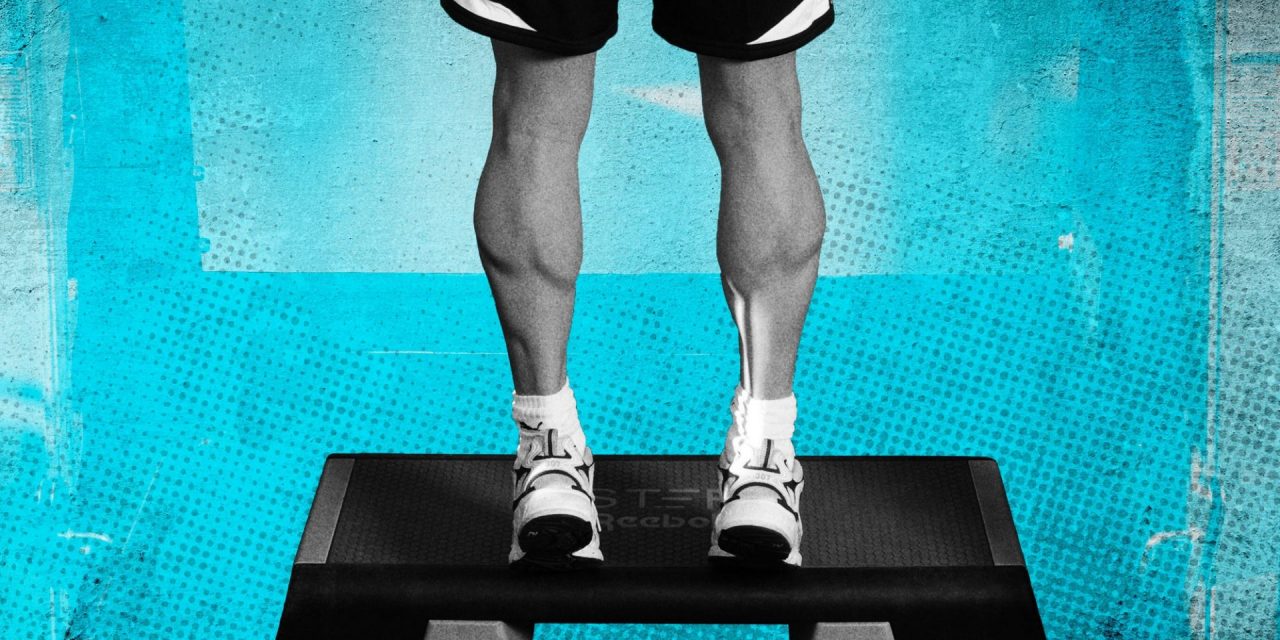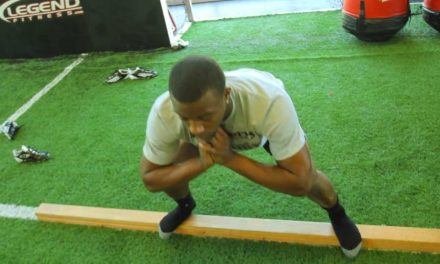Creating an off-season plan is a little overwhelming. Very rarely do we end the season victorious so we cannot stop thinking about everything we have to improve upon. On top of what we think should be fixed, we get a bunch of suggestions from the head and assistant coaches because they have their own opinions. After that, we see all of these other programs and exercises that could potentially be used. The problem is there is not enough time in the day to do all of the great things that others are doing or that our own coaches want.
Because of this, there have to be some exercises and concepts that have to be left out of programming. While creating a workout it is nice to eliminate exercises and concepts so there is less clutter when trying to create a plan. Below are some concepts and exercises that I believe should not be in your off-season programming so you can make room for other things.
DO NOT PROGRAM: Anything that increases injury risk
I know this seems like a no-brainer. I also know that this is a tough one to start with because everything can hurt someone and sometimes injuries happen even with good form and proper programming. It is important for me to say that during the off-season, I believe that nobody should ever get injured. Athletes usually get hurt when we progress them too quickly, we program too difficult of exercises, are not giving them enough rest/recovery time, are not doing things that help them recover, or when repetitions are performed improperly.
If I even have one minor off-season injury, I am very bothered because if athletes are injured, it is very hard for them to improve to the highest degree. I even believe that if I make an athlete vomit then something is wrong because if athletes are getting sick, then I am asking them to do something too quickly, with too much volume, or the athlete is not taking care of themself. This does not mean our workouts are easy but means that I try to make them do hard things when it is appropriate. This is a difficult balance and I sometimes make mistakes pushing them too hard and sometimes not pushing them hard enough.
That being said, the following are two of the many exercises that increase injury risk:
Medicine Ball Wrestling
I used to have athletes get on their knees and each face a common medicine ball. When I blew the whistle they would try to wrestle the ball from their opponent. It was a great drill and some of the matches would take over five minutes until there was a winner. It developed competition, intensity, and the desire to win. Even though it accomplished many things I had to take it out of our programming. I saw multiple players get their arms twisted, get their bodies into unsafe positions, and I had one athlete get labrum surgery because of it. The worst part of this was I knew I should not have been doing this to our athletes as soon as I saw the first repetition. The kids loved it and I just kept thinking that we would get lucky and not get injured. For this exercise, the risk was not worth the reward.
Snatch
Snatch is a very dangerous exercise because it is so complicated and because of the range of motion that is required for the shoulders. I once went to a school where Snatch was a part of their program and they also had constant shoulder surgeries. Once we eliminated Snatch we also eliminated all off-season shoulder injuries. The reason why our athletes were getting injured is because they were too compliant and would not “bailout” of the exercise. If they got the bar two-thirds of the way up, they would try to muscle it up through their shoulders. I understand why they were doing it because we always want our athletes to finish lifts but in this case, it was to their detriment.
There are many more exercises that increase injury risk and the exercises that should be eliminated from one school might not be the same at another school. Some exercises need to be eliminated because coaches do not teach them well while others should be eliminated because the players cannot perform them. In some cases, athletes cannot perform them because they are not smart enough or because there is not enough time for them to master an exercise. For my athletes, high level Olympic Lifts like Snatch fit into the categories of me not coaching them well enough and my athletes not having enough time to master them.
To decrease frustration and injuries, program exercises that you can teach and more importantly your players can perform. If players do not understand how an exercise is performed or do not understand why they are doing it, the workouts will always suffer. In those cases, it is always better to just pick an alternative exercise. The good news is workout adjustments might only need to take place for a short amount of time until the players get better or until the coaches get better at teaching it.
DO NOT PROGRAM: Too many pushing exercises
There are some programs that do some sort of Bench Press every strength training day. At first, those athletes will see their progress skyrocket but they will eventually hit a wall and not be able to improve until they rest. Sometimes recovery time is the reason for improving and it is not always that players need to work harder or do an action more often.
I once took over a program that was winning a lot of games but each year they were consistently losing a couple athletes to labrum tears. When I started asking questions about their past programming they informed me that they were doing five pushing exercises for every one pulling exercise. Once I got that answer, the shoulder injuries made complete sense. We were able to eliminate all shoulder injuries in one year by going to a 1:1 ratio of pushes versus pulls. Two years later we won the State Championship and for the final game, every single player was dressed and available to play. Having everyone ready to play in week fifteen is one of my proudest accomplishments.
Not programming too many pushing exercises is hard for coaches and athletes because a lot of upper body actions in football are pushes and pushing exercises make athletes look good in their uniforms. The problem with this way of thinking is yes, the front of the body is what makes people more attractive, but the back of the body is what creates athleticism and decreases injury risk.
DO NOT PROGRAM: Logistically inefficient exercises
Just because you have equipment does not mean that you have to use it. If there is equipment that causes “log jams”, then another exercise or variation should be chosen to work those same skills or muscles. At one school I work at, they have 7 racks but only 6 Pulley Pulldown/Row machines. On top of that, the machines are constantly breaking. With a lot of athletes in the weight room at the same time, we are not able to use the Pulldown/Row machines because sets of athletes will not have access to those exercises. One solution is to have the groups that do not have access to do band pull downs or band rows but that did not eliminate the problem of us wanting to use those exercises to lift heavy weights. We ended up deciding to do a variety of Bent Row and Pull-ups instead of trying to deal with the machines.
There are pieces of useful equipment like sleds, parachutes, and battle ropes but most schools do not have enough of them to take care of the logistical concerns. At schools where we do not have enough of something for everyone to use at once, we either find an alternative or use stations to ensure that athletes can quickly use equipment. One thing that I would love to have is a Vertimax but we would not be able to buy enough of them to make it make sense.
Another piece of equipment that I like but is frustrating to implement is the Agility Ladder. It is frustrating because I feel like the athletes stand in line too long before it is their turn, I spend more time teaching the patterns than the athletes doing the exercises, and there is always one athlete that destroys the ladder each time they go. Because of those issues, we spend more time fixing the ladder than moving through it and this is especially true when the athletes have cleats on. One potential fix for these issues is to paint or tape the ladder on the surface. Another fix is to do the ladder exercises on a line and you can find an example video for these exercises here.
Eliminating some pieces of equipment is not a big deal for me because my business gets hired by schools to design and implement workouts. We have to go to schools that sometimes have everything we want and sometimes hardly anything that we want. In either case we make it work. All of our programming decisions come down to space, how many athletes, and what equipment they have. Even though it is fun to have all of the equipment that is wanted, good strength coaches can figure out a great plan wherever they work. During the pandemic, I was amazed to see how many good high school strength coaches were struggling with putting together at-home workouts for their athletes. They were struggling because they did not have the normal allotment of equipment they were used to having. All coaches should be able to program concepts and exercises off of whatever we can or cannot get our hands on.
DO NOT PROGRAM: Isolation Exercises
Programs only have so much time to train so creating “dense” workouts is essential. To eliminate “wasting time” on isolation exercises, combine them to get more bang for your buck. Exercises like Curls, Tricep Extension, and Calf Raises are just some of the exercises that can be integrated into other exercises. Curls can be paired with a lower body exercise like Lunges and Tricep Extension can be integrated with Overhead Squat. I do not think that Calf Raises should ever be programmed because we do so much running, jumping, agility, and triple extension exercises.
On top of combining exercises, some isolation exercises like Machine Leg Curl can be done even better by doing an exercise like Russian Leg Curls, Glute Bridge Walkouts, or Glute Hamstring Raises. These three exercises are better than Machine Leg Curl because the ankles, calves, hips, and lower backs are engaged at a much higher level.
Many “Core” exercises also fall into the isolation exercise category. When selecting “Core” exercises do not select “Ab” exercises. For me, crunches would be considered an “Ab” exercise. Think about “Core” exercises as exercises that work everything from the nipples to the knees on boths sides of the body. Exercises like Dead Bugs, Plank Variations, and Table Tops will activate more muscles than doing Crunches.
DO NOT PROGRAM: Long Distance Running
Just to make sure that we are clear, I did not say, “Do not condition.” Many coaches think you need to run continuously and for long distances to condition and that is not true. I want my athletes heart rates to greatly elevate and that is not going to happen if they are jogging. Football is a game where you sprint for 4 seconds, rest for 15-20 seconds, and do it 100 times. We need to mimic that game-day pattern and slow, long distance running is not the answer.
One of the best ways to condition while still working on speed endurance is to do “1:1 Ratio Runs”. In this situation, the athletes will run for a certain amount of time and then get the same amount of rest. For my athletes, we do this with 100 yard runs. In the off-season, I give the skilled players 16 seconds to finish and the big athletes 18-20 seconds to finish. I give them anywhere from 15-20 seconds rest and we keep repeating. You can use this concept for doing 40 yard sprints for conditioning and even long distance runners use this for running repeat, fast miles. If you want to do long distance running as a change-up, that makes complete sense and it can be sprinkled in from time to time. It just should not be a staple of your programming.
Future Articles
Now that we discussed what can be eliminated from programming, I am going to break down what components should be in programming for strength and speed programs.
If you are interested in learning more you can go to the resources page on my website (https://exceleratead.com/training-theory) to find my FREE and moderately priced CoachTube Courses, Coaches Choice Videos, and a variety of other training articles and resources. My contact information is on my website so please feel free to email me with any questions.





